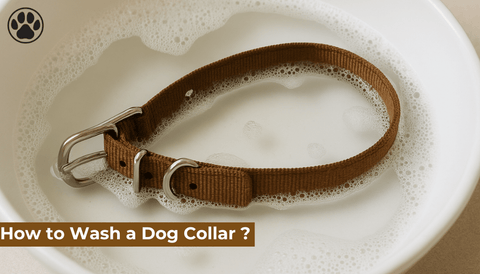
How to Keep Dogs Out of Your Yard ?
of reading - words
Maintaining a pristine yard can be a challenge when neighborhood dogs or stray animals wander onto your property. Whether they’re digging up flower beds, leaving behind waste, or damaging your landscaping, knowing how to keep dogs out of your yard is essential for any homeowner. Fortunately, there are many effective and humane methods to protect your outdoor space.
Why Do Dogs Enter Your Yard?
Before addressing solutions, it’s important to understand why dogs may be attracted to your yard:
-
Smells: Food, compost, or animal scents can draw dogs.
-
Soft Soil: Ideal for digging.
-
Other Animals: Presence of birds, rodents, or cats.
-
Lack of Boundaries: Easy access encourages exploration.
By identifying the cause, you can choose the most effective strategy to deter unwanted canine visitors.
Install Physical Barriers
The most effective way to prevent dogs from entering your yard is to create a physical barrier.
Fencing
Installing a fence provides a clear boundary:
-
Height: At least 4 to 6 feet to prevent jumping.
-
Material: Solid wood, vinyl, or metal panels block access and visibility.
-
Underground Protection: Extend the fence below ground to deter digging.
Invisible Fencing
Invisible or electric fences use underground wiring and a special collar. While effective for your own dog, they are generally not a deterrent for stray or neighbor dogs without collars.
Hedges and Shrubs
Dense hedges and shrubs can act as natural barriers, enhancing privacy while discouraging canine trespassers.
Use Dog-Repellent Products
Dog repellents can discourage dogs from entering your yard without harming them.
Commercial Repellents
These products use scents that dogs find unpleasant:
-
Citrus oils
-
Vinegar-based sprays
-
Ammonia solutions
Apply these products around the perimeter, near entry points, or on areas where dogs frequently visit.
Homemade Solutions
You can create your own natural dog repellent:
-
Mix cayenne pepper and water.
-
Spray a solution of white vinegar and water.
-
Use citrus peels scattered around the yard.
Always test these solutions on a small area first to avoid damaging plants.
Motion-Activated Devices
Motion-activated sprinklers and ultrasonic devices provide an effective deterrent.
-
Sprinklers: A sudden spray of water startles the dog without causing harm.
-
Ultrasonic devices: Emit high-frequency sounds that are unpleasant to dogs but inaudible to humans.
These options are ideal for persistent visitors and can cover large areas.
Train Your Own Dog
If your dog is attracting other dogs:
-
Training: Reinforce boundaries and discourage behaviors that invite other animals.
-
Supervision: Avoid leaving toys, food, or waste in the yard.
-
Routine Cleaning: Remove waste promptly to reduce scent markers.
Eliminate Attractants
Remove anything that might be attracting dogs to your yard:
-
Secure trash bins with tight lids.
-
Cover compost piles and avoid meat scraps.
-
Clean up fallen fruit from trees.
-
Remove bird feeders if they attract other animals.
By minimizing attractants, your yard becomes less appealing to wandering dogs.
Secure Entry Points
Inspect your property for areas where dogs may gain access:
-
Gaps in fences
-
Open gates
-
Weak spots under fences
Reinforce or repair these areas to maintain a secure perimeter.
Speak to Dog Owners
If the problem involves neighbor’s pets:
-
Polite Conversation: Approach your neighbor kindly and explain the issue.
-
Local Ordinances: If necessary, refer to community rules or animal control regulations.
-
Mediation: Use community mediation services if the situation escalates.
Maintaining good neighborly relations while protecting your yard is always the ideal solution.
Professional Solutions
For ongoing problems, consider professional services:
-
Animal control officers can address stray dog issues.
-
Landscaping professionals can design dog-resistant yards.
-
Security companies can install advanced perimeter systems.
Investing in professional help ensures long-term solutions tailored to your specific situation.
Long-Term Landscaping Solutions
Designing your yard with deterrence in mind can be highly effective.
Plant Dog-Repellent Plants
Certain plants naturally repel dogs due to their scent:
-
Rue
-
Citronella
-
Marigolds
-
Lavender
Plant these around the perimeter to create a natural barrier.
Hardscaping
Replace soft soil with:
-
Gravel paths
-
Rock gardens
-
Paving stones
These surfaces are less attractive to dogs who like to dig.
Legal Considerations
Always ensure your deterrent methods comply with local laws:
-
Avoid any method that may harm the dog.
-
Check with local authorities regarding fence regulations.
-
Use only approved repellents.
Protecting your yard should never involve harming animals or violating regulations.
Conclusion
Learning how to keep dogs out of your yard requires a combination of strategies tailored to your property and situation. By combining physical barriers, natural repellents, motion-activated devices, and landscaping choices, you can create a safe and dog-free environment. Addressing the issue respectfully with neighbors and considering professional help when needed ensures long-term success.
FAQ
What is the most effective way to keep dogs out of my yard?
Physical barriers like fences are the most reliable, but combining them with repellents and landscaping solutions offers the best long-term results.
Are homemade dog repellents safe for my plants?
Some, like vinegar or citrus, can harm certain plants. Always test on a small area before wide application.
Do ultrasonic devices work for all dogs?
Ultrasonic devices are generally effective but may not work on all breeds or persistent dogs.
Can I use mothballs to keep dogs away?
No. Mothballs are toxic and should never be used as a dog repellent.
What should I do if neighbor’s dogs continue to enter my yard?
Politely speak to the owner first. If the problem persists, consult local animal control or community regulations.




